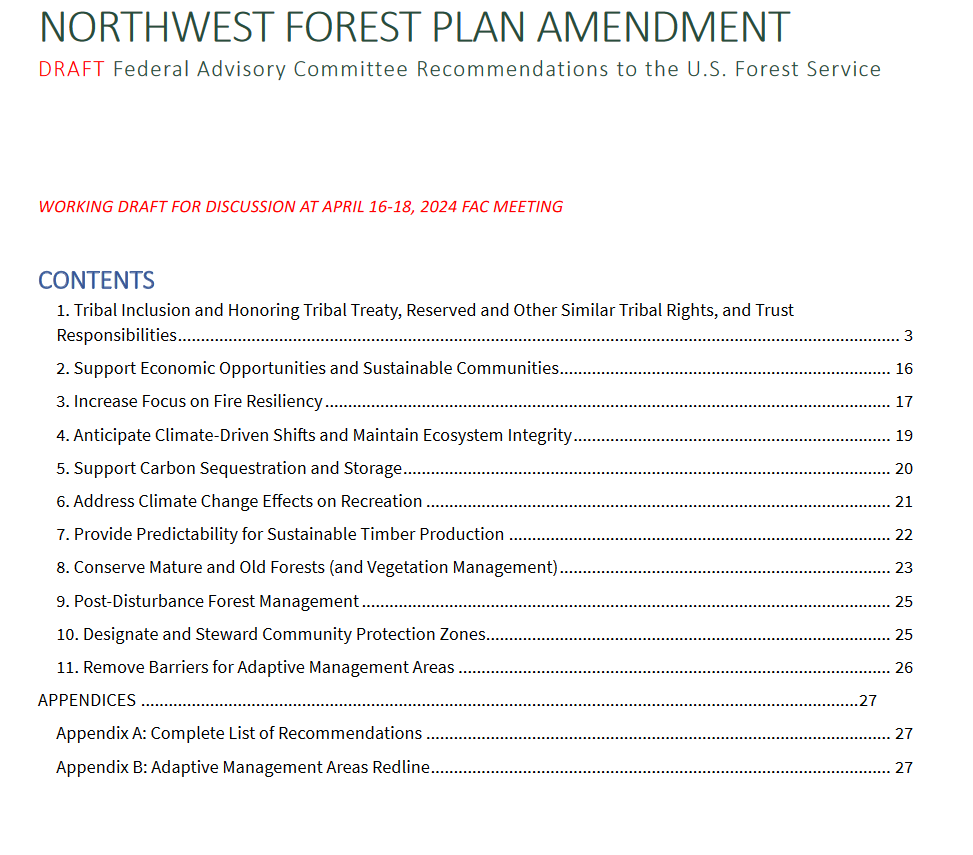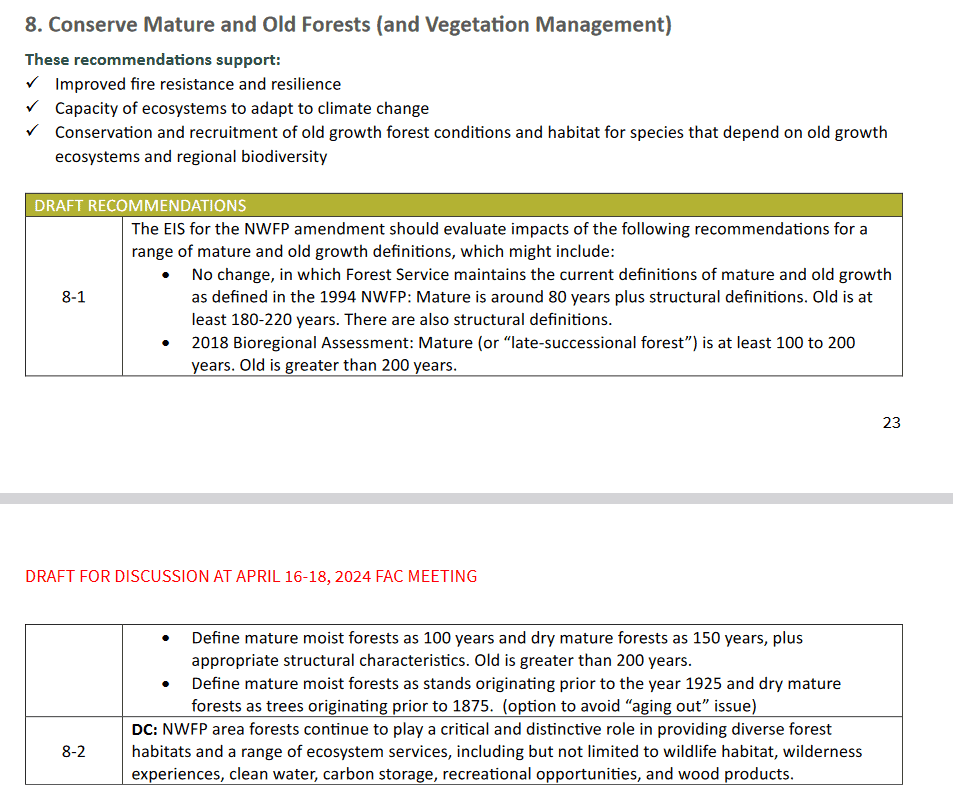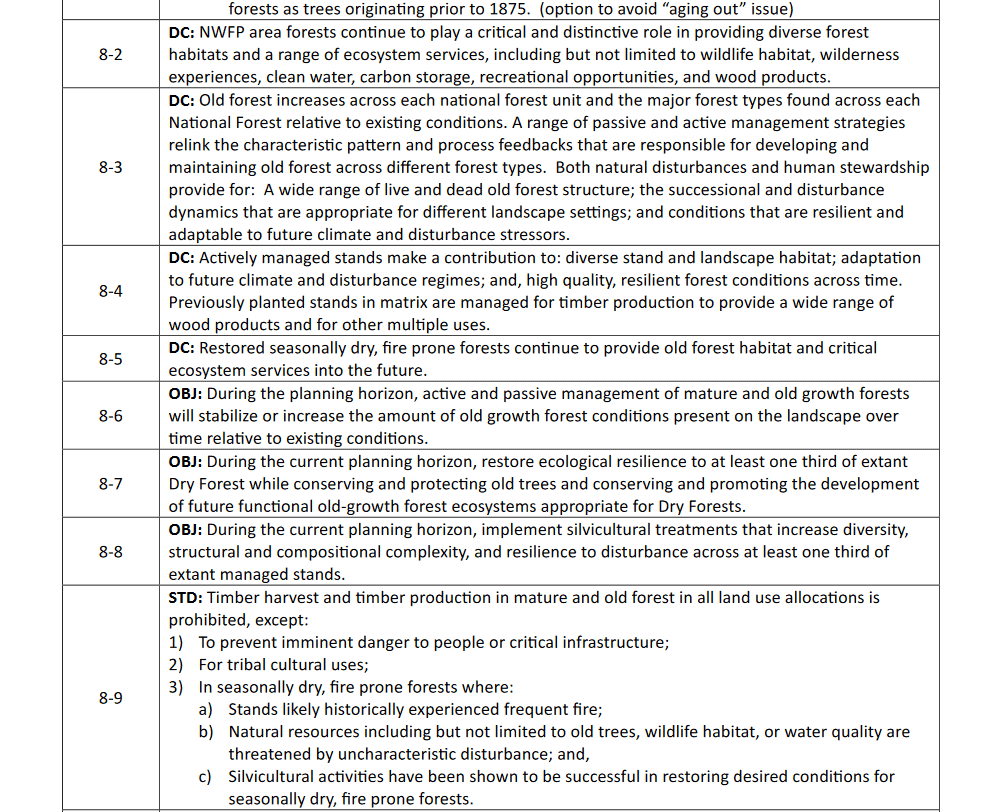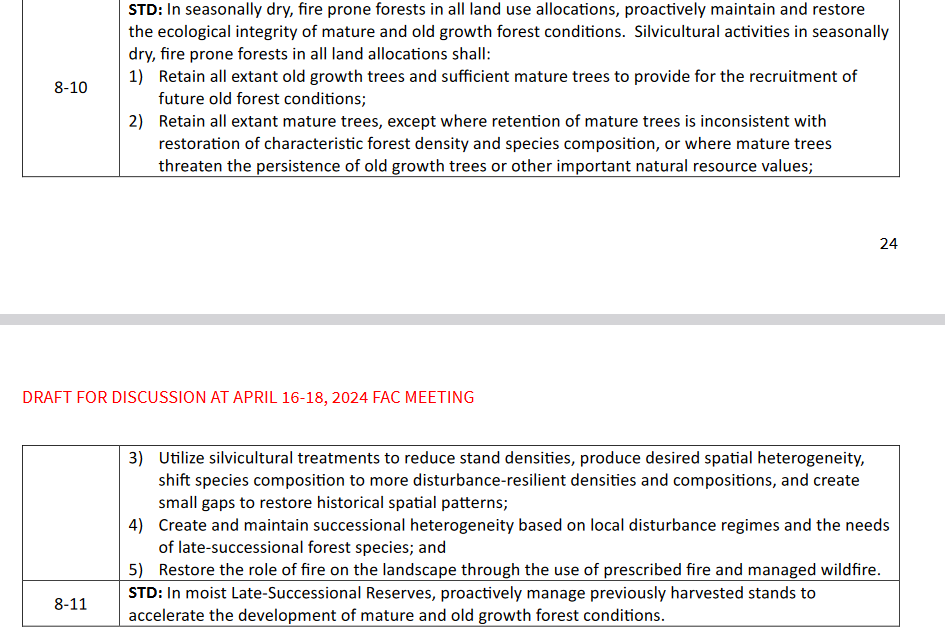Susan Jane Brown was kind enough to provide links to the draft plan components and draft recommendations. She pointed out, importantly (!) that “THESE ARE DRAFT AND UNDER ACTIVE DISCUSSION AND NEGOTIATION. The USFS hasn’t made any decisions yet, nor has the FAC reached consensus.” Here’s a link to their meeting archive page, and here’s one to the recommendations.
As with many things in forest planning there are many words here, the Tribal recommendations are too long to post, 15 pages and change.
So I hope readers will take a look and give us your thoughts on any section. Maybe our thoughts will help inform the FACA committee and the Forest Service? I’d like it if they would not use “resiliency” and always use “resilience” but that’s just me.
Here are plan components for those not familiar with the planning process:
 Here are the different sections for you to look at.
Here are the different sections for you to look at.
Here’s a section some might be interested in (I picked it because it is relatively short):




It’s obviously a government planning document, as evidenced by all of the insider acronyms, but I think “STD” has already been taken and popularized. Not sure if plagiarism, Dad humor, or ignorance is involved, but I definitely think the word “Standard” doesn’t need its own acronym.
Where are the LSR and NSO components? Seasonally dry forest province populations of NSO are considered essential to recovery and there’s nothing specific in here about LSRs or NSO. NSO have specific habitat requirements that these plan components do not ensure will be provided in frequent fire forest types. Also, it is my understanding that the USFS intends to have plan components for low severity fire dominated forest types, mixed severity fire forest types, and infrequent fire forest types (3 different categories). Not sure how that will all work itself out and how one will draw the line between mixed and low severity fire forest types, as it’s more of a gradient than a line between the two.
That (presumed Forest Service) presentation of what you labeled as “plan components” is dangerously misleading. Per the Planning Rule, NFMA-required consistency (that is, enforceability) only applies to “plan components,” and “management approaches ” are NOT plan components. There can be a temptation for the Forest Service to put things in there that are important enough to be plan components, but the agency doesn’t want that level of commitment. They can’t then take any kind of credit for “committing” to them.
I’m not sure the public fully understands the importance of this concept introduced by the 2012 Rule. I think management approaches should probably be used as assumptions as part of the effects analysis, but in some cases they may be just wishful thinking. Monitoring is also not a plan component, and is similarly not binding, but I think more people understand that distinction. These two things should not be lumped in with plan components without that distinction being made clearly.